The history of Chicago Booth is one of pioneering insights that have transformed the practice of business—and even the way we live. From the revolutionary ideas about finance from Nobel laureate Eugene F. Fama, MBA ’63, PhD ’64, to fellow Nobel laureate Richard H. Thaler’s work on behavioral economics, some of the most influential business concepts in history were born at Booth. Today, our faculty comprise more than 200 preeminent scholars of business whose innovative research is helping shape the world of today—and tomorrow.
Throughout the school’s history, leading scholars across disciplines have chosen to conduct research at Booth because they know that here they are free to explore their curiosity in an intellectually open and supportive community. They are surrounded by passionate colleagues, all committed to testing and nurturing ideas that can create global impact.
Booth is also a place of transformative business education. We anchor students in core disciplines but give them the freedom to choose the courses that best meet their goals. Similarly, our faculty are free to incorporate their research insights into classroom learning to illuminate key concepts and methods and underscore the critical importance of analytical rigor.
“One of the things that makes Booth unique is that we teach concepts in disciplines that have broad application across sectors and industries,” says Matthew Notowidigdo, the David McDaniel Keller Professor of Economics. “That discipline-based education means that we can use our own research to teach students to think logically and critically about data.”

For Full-Time MBA student Ben Harris, who took Notowidigdo’s Health Economics class, exposure to faculty research is part of what sets Booth apart. “Matt’s class checked all the boxes in terms of learning about healthcare economics,” he says. “But I also learned through his research how the fundamental principles can be applied to critical challenges within the US healthcare delivery system.”
As we celebrate the 125th anniversary of Booth’s founding, here’s a look at how The Chicago Approach™ comes to life in Booth classrooms today.
Measuring the Effectiveness of Advertising
There’s an old saying in marketing, often attributed to retailer John Wanamaker: “Half of my advertising spend is wasted. I just don’t know which half.”
Does the adage hold up? And if so, is it possible to home in on which advertising to eliminate?
Using data that documents advertising exposure as well as retail sales, available to researchers through Chicago Booth’s Kilts Center for Marketing, Bradley Shapiro set out to answer that question by measuring advertising effectiveness across hundreds of product categories. Today, Shapiro uses that study in his Marketing Strategy course to demonstrate research methods and concepts.
In his class, Shapiro—professor of marketing and the True North Faculty Scholar—also highlights work he’s done on pharmaceutical markets, Facebook advertising, and even consumer preferences for firearms.
“I bring research into the class for two reasons,” he says. “One is to present the evidence for the concepts I’m teaching, and the other is to demonstrate a tool I’m teaching them to use. Somebody who plans to be a brand manager doesn’t necessarily care about the firearms question, but I can demonstrate that tool very clearly through showing them that research.”
For current Full-Time MBA student Yong Cho, Shapiro’s class was an eye-opening introduction to the data-driven nature of marketing. With a background in applied math and finance, Cho says he knew almost nothing about marketing and thought of it as basically a nonquantitative, or “fluffy,” subject.
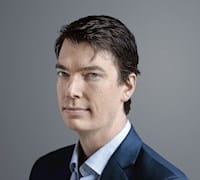
“It’s a free-market approach. When I showed up at Booth, the faculty dean made it clear I could teach my class the way I wanted to so long as the students engaged with the material.”
— Bradley Shapiro
“My biggest takeaway from the class is that there’s a structured framework to thinking about marketing,” he says. “Professor Shapiro built a detailed experimental framework and designed an experiment to test it. And then he explained it to us at an overarching level.”
Shapiro notes that more than five faculty members teach Marketing Strategy, and each one teaches it differently, giving students an array of experiences and perspectives to choose from.
“It’s a free-market approach,” he says. “When I showed up at Booth, the faculty dean made it clear that I could teach my class the way I wanted to so long as the students engaged with the material. That approach allows me to talk about research that I think is relevant both to me and to the students.”
“There’s a reason Booth has more Nobel Prize winners than any other business school by a massive margin,” Shapiro adds. “It’s because research has always been central to the way we think about business school. That culture has persisted and created a legacy of continuity.”
The Science of Motivation
What happens when you start a brainstorming session by deliberately asking for a bad idea? According to Ayelet Fishbach, that’s when creativity starts to flow.
“We call these ‘stupid ideas.’ And while not quite right, they allow you to break free from the obvious ideas,” says Fishbach, the Jeffrey Breakenridge Keller Professor of Behavioral Science and Marketing and an IBM Corporation Faculty Scholar. “And that makes you more creative.”
To illustrate this finding in her class, Managing in Organizations, Fishbach encourages students to test the technique in the real world. Can it foster creativity in themselves or among members of their work teams? Many students find that it does.
Fishbach incorporates into her teaching much of her extensive research on motivation and other behavioral science topics. Students participate in goal-setting exercises that illuminate her research on how to set goals better. In another example, they complete exercises based on Fishbach’s findings that people often don’t deliver—or hear—negative feedback as accurately as they think.
“Students are intrigued by the concepts we bring in from research and they want to try them,” she says. “If your job is to manage people, you’re constantly looking for new managerial ideas. Research from behavioral science provides students with practical advice they can apply at work.”
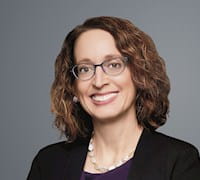
“Whether it’s in the format of a paper or me preparing a class, it’s the same mental process of organizing the knowledge and thinking about the story that the data tell us. One way to make sense of what we find is by teaching it.”
— Ayelet Fishbach
Amy Klockenga, ’21, says she uses principles from Fishbach’s research in her personal and professional life. “One thing I learned is that if you set a specific goal, you are more likely to achieve it,” says Klockenga, senior counsel, employment law with Alight Solutions, a publicly traded global benefits outsourcing company headquartered in Lincolnshire, Illinois. “For example, saying you will walk 10,000 steps a day is more motivational than just saying, ‘I am going to go out and walk.’ That concept is something I have put into practice. As a result, I have exercised on days when I did not feel like exercising, and I have accumulated 453 consecutive days of walking 10,000 or more steps. This has helped me dramatically improve my fitness.”
For Fishbach, author of Get It Done: Surprising Lessons from the Science of Motivation (2022), teaching and researching go hand in hand. “It’s hard to separate the two,” she notes. “Whether it’s in the format of a paper or me preparing a class, it’s the same mental process of organizing the knowledge and thinking about the story that the data tell us. One way to make sense of what we find is by teaching it.”
Fishbach, who serves on the governing board of Booth’s Roman Family Center for Decision Research, says that as a data-driven institution, the school lends itself to the integration of research and teaching.
“At Booth, it’s not about whether you can make a good argument. It’s about whether the data you collected support that argument. And thus teaching starts with collecting data.”
Insurers of Last Resort
US hospitals are required to provide emergency treatment for patients, whether or not the patient has health insurance. But who pays for that care? And what are the implications for hospitals?
A common assumption is that hospitals pass on these uncompensated costs to private insurance companies, which then pass them along to privately insured patients.
But research by Professor Notowidigdo tells a different story. Examining evidence from individual credit reports and hospital financial records, Notowidigdo, who is also codirector of the Healthcare Initiative at Booth, finds that US hospitals are already doing everything they can to maximize their profits. If they could have raised costs for insured patients, they would already have done so.
“The evidence suggests that this cost shifting in hospitals doesn’t really happen,” he says. “It really is the case that the hospitals bear the financial cost of caring for the uninsured.”
Notowidigdo introduces lessons from this and other research in a course he developed, Health Economics, as a way of showing MBA students how to look past simple explanations and dig deep into data.
“I believe passionately that my class is not about factual knowledge. I’m not teaching them facts about the healthcare sector,” he says. “I’m teaching logical reasoning about how to apply economics concepts to understanding how the healthcare sector operates.”
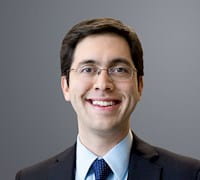
“I’m not teaching them facts. . . . I’m teaching logical reasoning about how to apply economics concepts to understanding how the healthcare sector operates.”
— Matthew Notowidigdo
For Harris, an Obama Foundation Scholar and a Neubauer Civic Scholar at Booth, Notowidigdo’s class provided a more analytical perspective on issues he’d been thinking about for some time in his previous work at a Medicaid agency and a community-based clinic.
“Matt’s research looks at the implications of how different policy constraints lead to different operational choices from providers across the healthcare delivery system. That is an important connection to make, particularly at a business school where many students will stem into operational positions and try to achieve the optimal outcome,” he says. “To see the microeconomic principles behind that connection was exciting and provided a formative framework for how I should go about future work.
“So many of the examples in that class came from Matt’s own curiosity, and that sets a broader tone,” Harris adds. “If you couple genuine curiosity and intellectual rigor, students feel comfortable enough to offer counterexamples from their own experience and to test that experience against rigorous economic logic. His class had some of the most thoughtful and engaging discussions I have been a part of while at Booth. I don’t think you can get that type of discussion without an academic institution fostering that type of approach and professors like Matt taking the lead.”
The Limits of Patience
You’re heading out for the evening, and you request an Uber. There are two drivers in the general vicinity, one who’s relatively close (Driver A) and another who’s a bit farther away (Driver B). Which driver should the app send to pick you up?
The easy assumption is that the closer driver should head your way. But what if there’s another rider who’s even closer to Driver A than you are and even farther away from Driver B? Then it might make sense for you to wait a little longer for Driver B, while the other rider gets picked up right away by Driver A.
That’s just one example of how Amy Ward brings research to life for her students in her class, Managing Service Operations. Ward, the Rothman Family Professor of Operations Management and a Charles M. Harper Faculty Fellow, focuses much of her current research on customer impatience, wait times, and the ways service organizations can make the most of their resources.
Ward says she brought her Uber research to class because it was something that her students could connect with. “They had all been ordering Ubers, so it was natural that they were thinking about how to create short wait times,” she says.
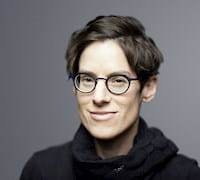
“In a class, you want to be able to do more than just deliver a particular concept. You want to be able to push the boundaries to see where the concept works and where it doesn’t. That’s where connecting with research is so important.”
— Amy Ward
In another example, Ward teaches a well-known formula that helps businesses identify the best ways to apply resources to reduce long wait times for their customers. But she also teaches the pitfalls of following that approach without taking additional factors into account.
“The formula assumes that everybody is going to wait forever. But this is not true,” Ward points out. “In fact, customers can be lost when made to wait too long. Then, what we talk about in class is how to incorporate such customer impatience into design decisions.”
For Ward, tying together research findings and classroom learning is fundamental to teaching MBA students.
“In a class, you want to be able to do more than just deliver a particular concept,” she says. “You want to be able to push the boundaries to see where the concept works and where it doesn’t. That’s where connecting with research is so important. The research is about understanding which assumptions are critical and which are nonessential.”
The Problem of Corporate Debt
When a company goes into default or bankruptcy, creditors begin to scrutinize the business and restrict its activities. But according to research by Amir Sufi, the Bruce Lindsay Distinguished Service Professor of Economics and Public Policy, creditors also step in and create difficulties under much less dramatic circumstances.
“Firms have covenants in credit agreements with banks that have provisions on certain financial ratios, like debt to cash flow,” he says. “And if your debt to cash flow goes above a particular threshold, you’re in violation of the agreement, and the creditor has the right to accelerate the loan and make you pay back the loan now.”
By examining the Securities and Exchange Commission filings of every publicly traded firm in the United States, Sufi finds that covenant violations resulted in sharp drops in acquisitions, investment in capital expenditures, and dividends paid to shareholders.
Sufi leverages this research in his Debt, Distress, and Restructuring class, both to demonstrate how frequently firms run this risk—even those that are nowhere near bankruptcy—and to underscore the critical importance of taking a broad view.
“When they look at how the data was generated and how we collected it, the students begin to appreciate that this isn’t just about my own experience working for a company—it’s a broad pattern,” he says. “At Booth, the way to learn about the world is not through anecdotes and limited experiences. It is about taking a step back to see the big picture, trying to do systematic, theoretical, and empirical research.”
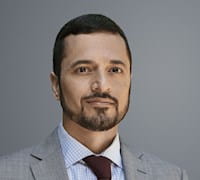
“We’re not a regimented place. We hire faculty who love research, and they want to tell people about their research. So the whole environment is designed in the right way to get learning to happen.”
— Amir Sufi
Evening MBA student Tess Cross says her experience in Sufi’s class informs her day-to-day investment decisions as assistant vice president at Monroe Capital in Chicago. “At Booth, we’re taught not to take things at face value,” she says. “When I go in front of an investment committee, I have to present the facts and defend my decision. And the way that research is incorporated at Booth taught me how to do that.”
For Sufi, the ability to align his teaching with his own research is a core part of the Booth experience. As a first-year professor at Booth, he recalls, he taught Corporate Finance the same way everyone else did. But by the following year, he was tailoring some of the content to include his own research. “The students liked that, because they could see that I was interested in it,” he says.
“We’re not a regimented place,” Sufi adds. “We hire faculty who love research, and they want to tell people about their research. So the whole environment is designed in the right way to get learning to happen.”
Shaping the Field
When Steve Kaplan taught his first Entrepreneurial Finance and Private Equity course at Booth some 25 years ago, there wasn’t much existing research on how to evaluate the performance of investments in funds or companies.
So Kaplan, the Neubauer Family Distinguished Service Professor of Entrepreneurship and Finance and the Kessenich E. P. Faculty Director of the Polsky Center for Entrepreneurship and Innovation at the University of Chicago, took the research upon himself.
In 2005, he cowrote one of the first papers to measure the performance of private equity funds. As part of that effort, he and his coauthor, MIT’s Antoinette Schoar, created the Kaplan-Schoar PME Index, a private equity benchmarking approach that is in wide use today throughout the industry. More recently, his work on venture capital contracts was cited in the Nobel Prize lecture Harvard’s Oliver Hart gave in 2016, and a paper he coauthored on VC investors was the 2020 first place winner of the Jensen Prize for corporate finance and organizations.
Kaplan says the direction of his research is informed by his teaching—and in turn, his teaching reflects what he’s learned through his research.
“Once I’ve done the research, I fold it back into the course, and then the students can start using it,” he says. “I get emails from students who took the course 10 years ago saying they still use my frameworks.”
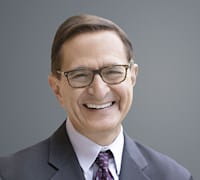
“Once I’ve done the research, I fold it back into the course. . . .I get emails from students who took the course 10 years ago saying they still use my frameworks.”
— Steve Kaplan
Ariana Bhatia, ’22, says Kaplan’s use of his own research in class gave her a broader perspective on the private equity industry.
“The data-driven insights he provides from his research are helpful to contextualize where the industry is today,” says Bhatia, vice president at the Vistria Group, a midmarket private equity firm in Chicago. “You’re not just learning the specifics of a case, but also how a case makes sense in the context of history.”
Kaplan says Booth offers an ideal environment for this data-driven approach. “Our students come here because they buy into the fact that research is useful,” he says. “So you can give them an academic paper and show them what you found, and they appreciate it. In addition, we attract faculty who understand what research can do. And when they find something interesting, they bring it into the classroom.”


